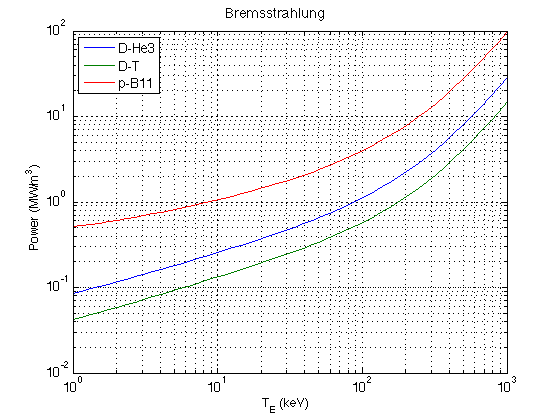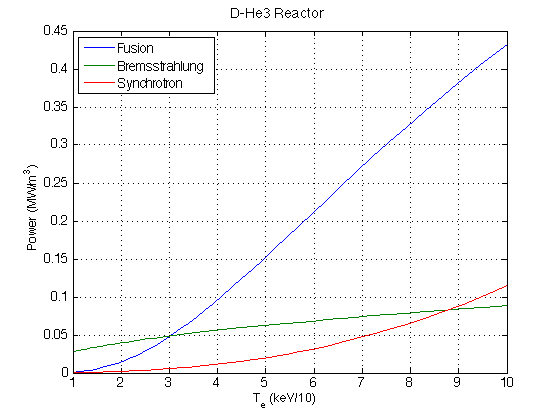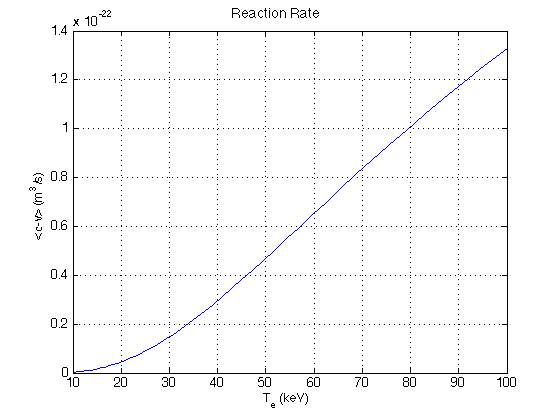
|
SUPPORT SITE |
|
Aneutronic fusion engines have the potential to revolutionize in-space transportation. A single function, DesignDHe3FusionEngine, generates a point design for a fusion engine for the Deuterium-Helium 3 reaction. It assumes a cylindrical geometry. It allows you to set separate temperatures for each reactant and the electrons to model non-equilibrium plasmas. It automatically computes neutron shielding, heating power, radiator mass and refigerator mass and specific power. This function allows you to do rapid trade studies of different temperatures, reactant number densities and other properties. The function will automatically generate a latex table with the inputs and all results for inclusion in latex files. This table was generated using the toolbox CreateHTMLTable function.
| Area radiator | 89.57 | square meters |
| Length plasma | 1.00 | m |
| Magnetic field | 5.6 | T |
| Mass magnet | 149.1 | kg |
| Mass radiator | 188.09 | kg |
| Mass refrigerator | 98.31 | kg |
| Mass shield | 1197.89 | kg |
| Mass total | 1633.39 | kg |
| Power bremsstrahulung | 1.39 | MW |
| Power fusion | 18.42 | MW |
| Power heat loss | 5.95 | MW |
| Power neutrons | 4.52 | MW |
| Power synchrotron | 0.05 | MW |
| Power thrust | 9.98 | MW |
| Radius plasma | 0.30 | kg |
| Specific power | 6.11 | kW/kg |
The fusion power functions are applicable to fusion power plant design for both space and terrestrial applications. They allow you to explore many different areas of electric power generation using nuclear fusion. The figure below shows a comparison of Bremsstrahlung power for three reactions.

The figure below shows fusion power versus ion temperature.

The figure below shows reaction rate as function of ion temperature.
